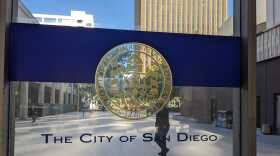Eight years ago, then-San Diego Mayor Kevin Faulconer exercised a new power few people seemed to know the mayor had. The City Council had approved a budget that cut out $5 million he had proposed to hold a special election on the future of Mission Valley.
He simply put the money back in the budget.
That day many of us realized for the first time that, under the strong mayor form of government, the mayor’s veto power gave him not only the ability to veto specific items in the budget but to shape the budget however he wants. The city attorneys facilitating the discussions made that ultra clear: “He can do whatever he wants.”
In other words, it wasn’t just a line-item veto power he had. He had line-item addition power.
The City Council might have been able to approve a budget with a simple majority but if it wanted to challenge the mayor on something like this, a supermajority of the Council would have to override him.
I remember filing that away and thinking someday that could be a much bigger deal than it was then.
That time is now: We could be headed for the biggest budget standoff in the 20 years since the city adopted the strong mayor form of government. The Council has regularly made marginal changes to the yearly budget the mayor proposed – and even those marginal changes have sometimes been fought fiercely.
But this year, the tensions and disagreement about the budget have reached a new high. The City Council and mayor seem to be not only disagreeing about structural spending priorities and revenue opportunities but they are also displaying a severe contempt for each other. Council staffs report nothing close to the collaboration they have had in previous years.
The contempt has gotten so perceptible that Councilmember Henry Foster, no ally of the mayor to be sure, suggested in the most public setting yet, something that has only been murmured about in the last several years: Maybe it’s time to bring the mayor back onto the Council and put a professional in charge.
“I think the public also needs to look at the strong mayor form of government. Because I’m not sure if it actually works in our favor and I think that is a real conversation the public needs to consider,” he said Monday at a budget hearing where the mayor and his chief financial deputies revealed they would have to take $10.1 million from reserves just to balance the current year’s budget before the fiscal year ends next month.
Councilmember Vivian Moreno noted that they didn’t have to dip into reserves like that even in the aftermath of the economic shock of the pandemic, when hotel tax revenue ground to a halt and mass layoffs began.
The areas of dispute: The Council seems particularly interested in restoring park and library hours and services the mayor wants to cut. It wants to find money to do that by eliminating upper management positions and speeding up the effort to impose paid parking in Balboa Park and Misson Bay.
The debate about the city’s growing ranks of managers – called unclassified as they are not represented by unions and can be hired and fired more easily – has been particularly tough. Michael Zucchet, the general manager of the Municipal Employees Association, or MEA, the largest union of city employees, has been relentlessly beating the drum about how many managers the city has hired and how reluctant the mayor has been to cut any of those positions, even the vacant ones.
In fact, quite the opposite. The city has been hiring them even during the mayor’s hiring freeze.
“We can count 28 program manager, program coordinator and other unclassified positions hired by the mayor during the ‘hiring freeze for only but the most essential employees,’ in mayoral departments that were non-public-safety.” Zucchet said at the same hearing. He pointed to two managers hired in the communications department, one just in April.
The mayor has addressed this controversy not by denying that the list of city managers has grown, but by arguing that it should grow.
In a memo sent to the City Council May 4, Deputy Chief Operating Officer Alia Khouri pointed out the city has grown so much over the past 15 years, it had no choice.
“Growth, modernization, and new programs often require the decision making, judgement and independent development of policies and procedures, and in some cases, the creation of entire programs or entire departments. These types of responsibilities are designated for unclassified management positions,” she wrote.
The memo highlighted other cities where they had proportionally many more unclassified managers than the city of San Diego. But it also highlighted two in California: San Jose and Los Angeles, both of which have a lower proportion of employees designated as classified.
Los Angeles has 2.8 times the population of San Diego but just 2.2 times the number of unclassified employees.
“The proportionality of frontline and public-facing workers losing their jobs compared to unclassified managers is out of whack,” Councilmember Raul Campillo told me.
This all could lead to an unprecedented budget response from the Council.
“He who proposes the budget has the most sway and the Council tends to make marginal changes at the end,” Zucchet said. “But I think this year will be unique. A significant number of Council members may propose significant changes to what’s in the proposal right now.”
What to watch: The City Council will send their hopes and specific proposals to their independent budget analyst. Then the mayor will come with a final proposed budget either ignoring them or incorporating them – or whatever.
Then we’ll have to see what happens. If the Council wants to reverse a cut the mayor is putting in motion, it will have to find the money somewhere.
But we could very well be heading down a path we haven’t seen before: The Council could put forward structural changes or actually make cuts to positions that exist in the mayor’s budget and then we’ll see what the mayor does in response.







